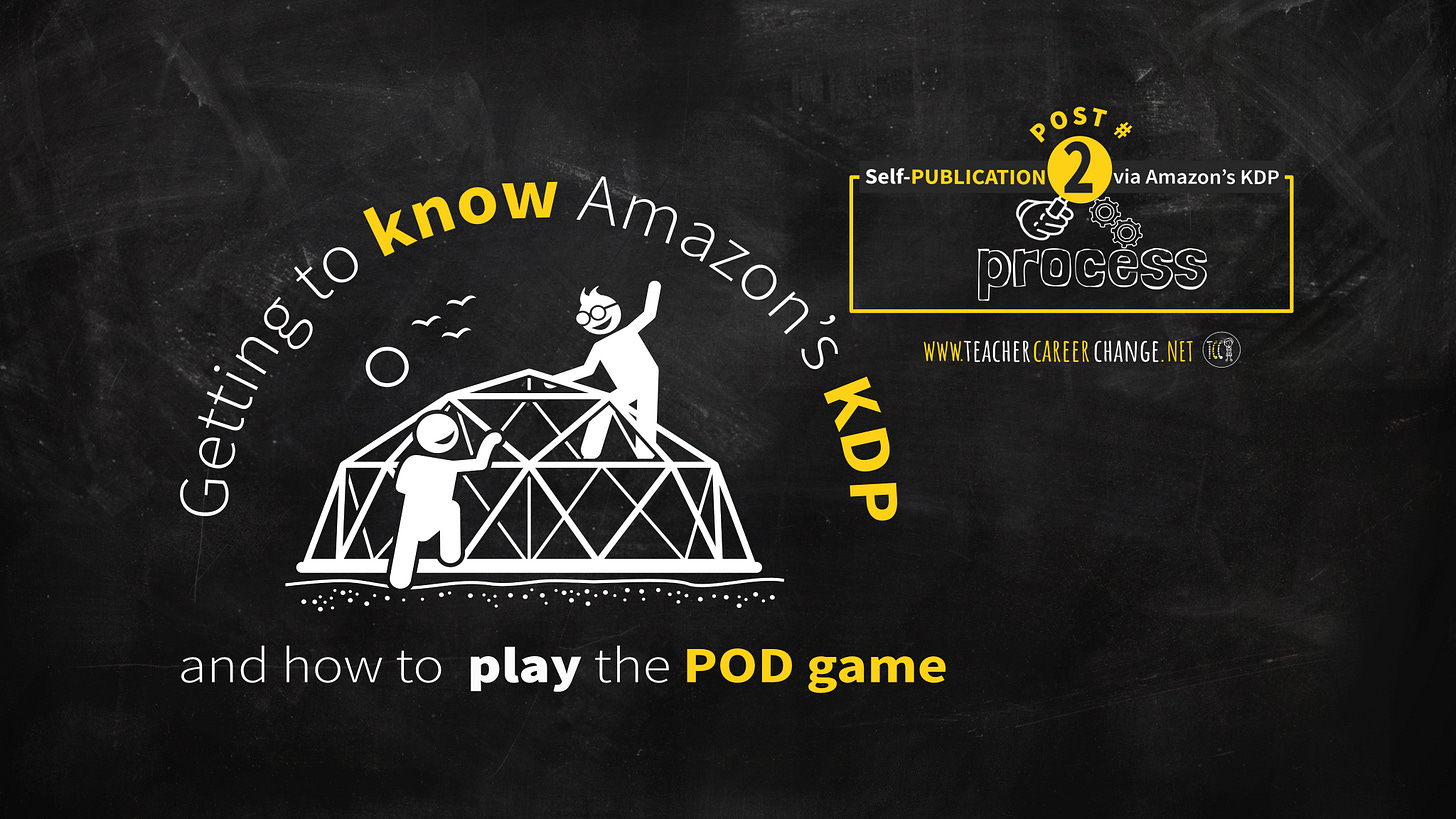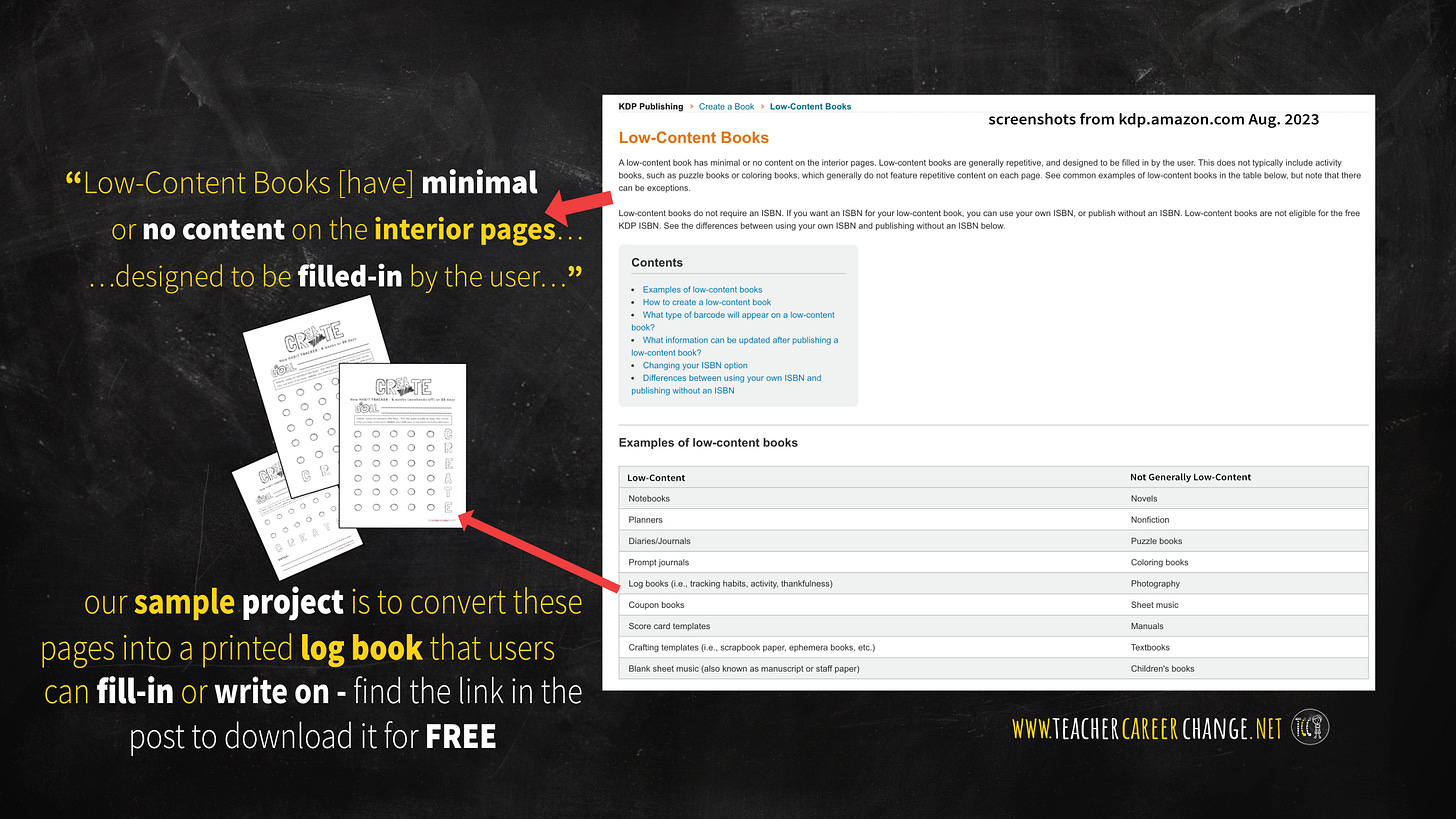Getting to know Amazon's KDP
and How to Play the Print-on-Demand Game (Self-Pub Post #2)
Last week, I introduced low-content books and how you can use it for your business or profession. Today, we will explore the Kindle Direct Publishing (KDP) platform. Amazon owns KDP. Anyone can sign-up for an account but you have to play by its rules. You need to know how to play the print-on-demand game. Let’s dive in.
WHAT can be Self-Published
Once you sign-up for a KDP account, you will be asked what you want to create. Here are the options:
It is also possible to create comic books and children’s books. In this series, we will pick the paperback option only.
KDP Playground Rules
Amazon takes intellectual property violations seriously. That is why your book will not be published automatically. It will be processed by their system or by someone to make sure it follows all the formatting and content rules. Their content policy can be found here. You must own the content or have permission from the copyright owner, unless it is already under public domain. They also do not allow offensive content.
What About Low-Content Books?
Amazon recognizes that low-content books have minimal or repetitive content. Some interiors might be similar to what others publish like, calendars. Even so, you should add your unique content through original layout, covers, titles, different font and color combinations, etc.
Our sample project is a habit change tracker which you can download for free from this link. Just put $0 in the price. As mentioned before, it has only a few pages right now, but I will show you how to transform it into a 120-page book. But before doing anything else, you have to know what fuels sales in Amazon.
Begin with Keywords
People go to Amazon to buy. Go to the main site at Amazon.com and start searching for a low-content book idea. Amazon will automatically will give you suggestions. Those are what buyers are searching. Copy those words and look at what is available to start brainstorming what low-content book you can create. If you are outside your target market, put the zip code of your intended buyers in the upper left where it says: “deliver to.” That will change your search results.
For this project, I changed my location to DC then began to search for “habit trackers.” These search phrases or keywords came out:
Indeed, there is a market for habit trackers. I took note of those phrases so I can use it in the “Paperback Details” section. Many low-content book creators use the keywords in all sections in the book description including using it as the author’s name. I’ll show you more in the next post. Now it’s your turn. Type your low-content book idea and find keywords. If you want, look at the items. Look at the reviews and see how you can improve on what is currently for sale.
But why should you consider publishing a low-content book? Buyers are flocking to Amazon. I’m sure your target market is there. A low-content book can be used to lead some of that buyers to your own website or store. Big brands like Pantene, Wet Ones, and Colgate are in Amazon and might be doing just that. Moreover, a free planner with your company name will be better than a brochure or a calling card. So go ahead, find your keywords. I’ll show you how I use keywords and match it with the needs of my niche. From there, we’ll design the inside pages of our low-content book using templates.







